In an era dominated by sophisticated digital tools and 3D modeling software, hand sketching remains the heartbeat of fashion design creativity. While technology has revolutionized how we present and refine our designs, the raw, unfiltered act of putting pencil to paper continues to be fashion’s most essential and intimate language.

Hand sketching a fashion croquis to visualize garment design and fit in a standing pose youtube
A Designer’s First Language
Hand sketching serves as the fundamental vocabulary through which fashion designers first express their creative visions. Before any digital refinement, before pattern-making, and before production begins, every garment starts as a simple sketch—what industry professionals call the blueprint of design. This immediate translation from thought to visual form allows designers to capture the essence of their ideas without the constraints or learning curves of complex software.
Fashion sketches function as a universal language within design teams, enabling seamless communication between designers, pattern makers, tailors, and clients. Unlike verbal descriptions that can be misinterpreted, a well-executed sketch conveys precise details about silhouette, proportion, and construction elements instantly. This visual clarity bridges the gap between creativity and technical execution, ensuring everyone involved understands the designer’s intent.
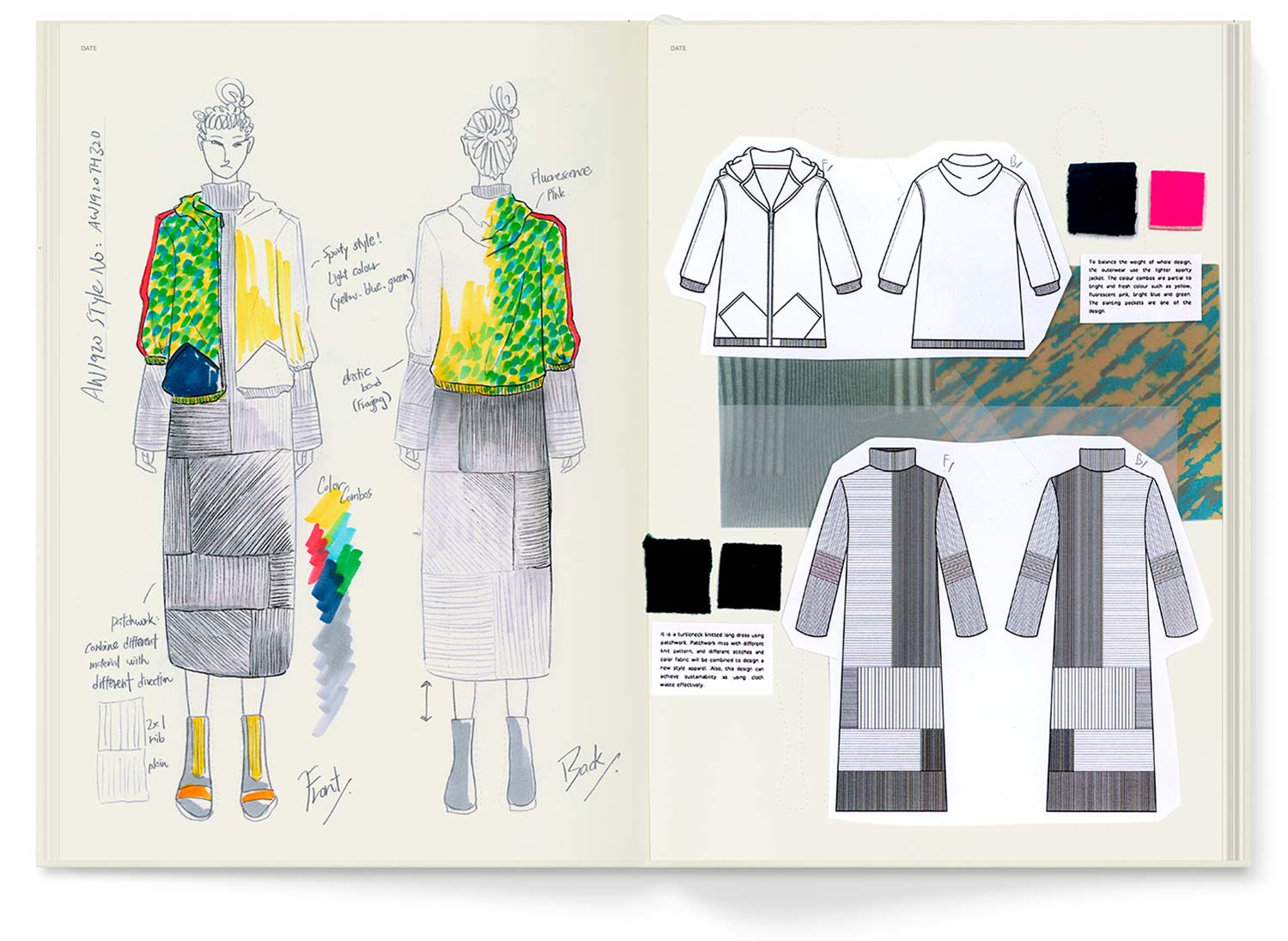
Hand-drawn womenswear fashion sketches combined with technical flats and fabric swatches illustrate the creative process and communication in fashion design fashionary
Speed & Spontaneity: The Creative Advantage
The speed at which ideas can be captured through hand sketching is unmatched by any digital tool. When inspiration strikes, designers need to act quickly before the moment passes. Hand sketching allows for immediate visualization of concepts, enabling rapid iteration and exploration without the barriers of booting up software or navigating complex interfaces.
This spontaneity is particularly crucial during brainstorming sessions and initial concept development. Designers can quickly experiment with different silhouettes, proportions, and details, making real-time adjustments that maintain the flow of creative energy. The physical act of drawing by hand engages different areas of the brain, often sparking unexpected creative connections that might not emerge through digital means.
Creative Freedom Without Constraints
Hand sketching offers designers complete artistic freedom without the limitations imposed by software capabilities or digital templates. Unlike digital tools that may restrict creative expression to pre-programmed brushes and effects, pencil and paper provide unlimited possibilities for experimentation.
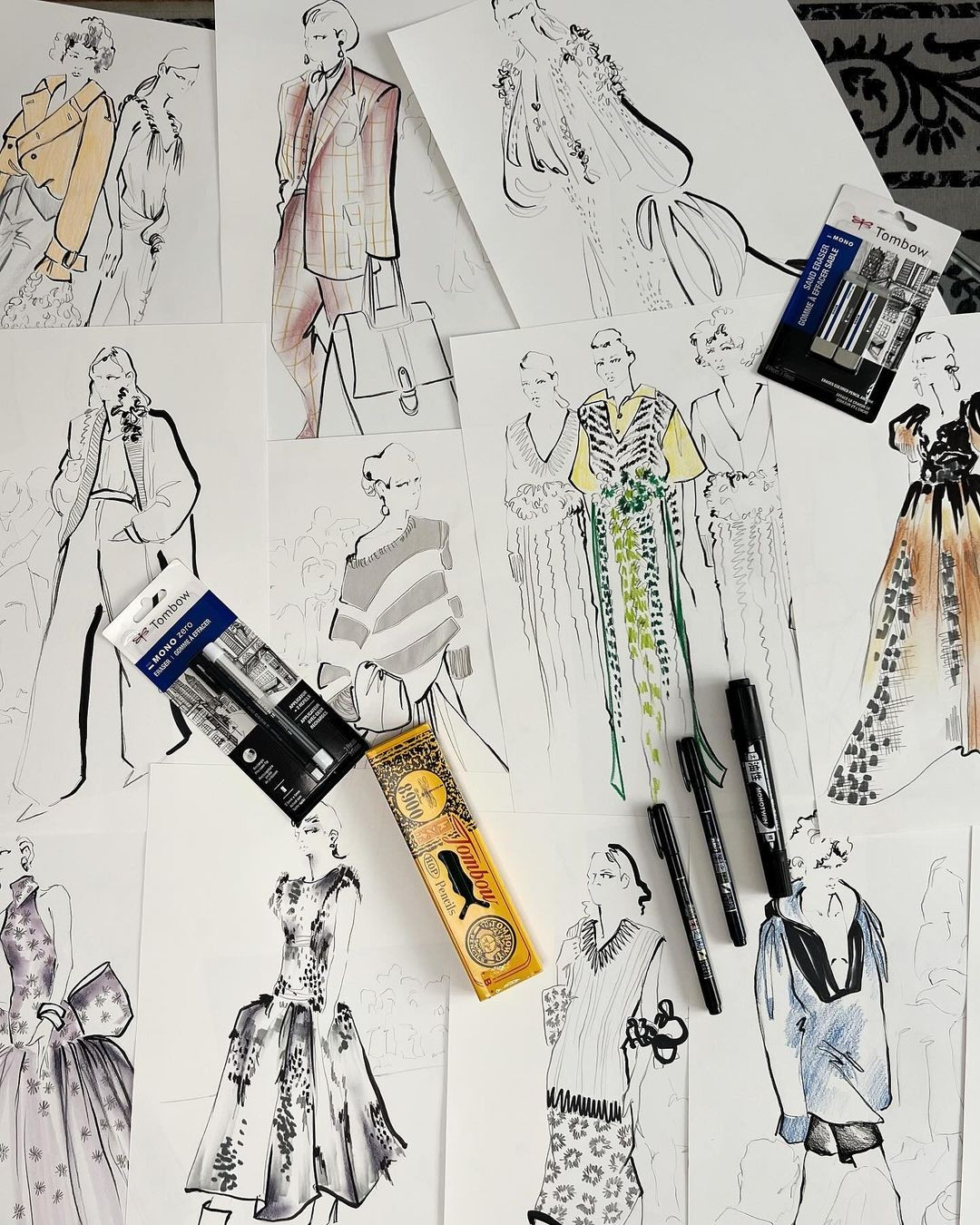
A collection of hand-drawn fashion sketches with color accents and drawing tools, showcasing the essential role of sketching in fashion design creativity amordesign
This freedom extends to the ability to work anywhere, anytime. Designers can sketch on airplanes, in cafes, or during meetings—capturing inspiration the moment it arrives. The portable nature of traditional sketching tools means creativity isn’t bound by power outlets, software licenses, or device compatibility.
Moreover, hand sketching allows designers to develop their unique artistic voice. Each designer’s drawing style becomes a signature element of their creative identity, something that can be diluted when working exclusively with standardized digital tools.
Skill Development: Training Eye, Hand, and Imagination
The practice of hand sketching develops crucial skills that benefit designers throughout their careers. Regular sketching enhances hand-eye coordination and trains designers to observe proportions, anatomy, and garment construction more accurately. This enhanced observational ability improves all aspects of design work, from understanding how fabrics drape to visualizing complex construction details.
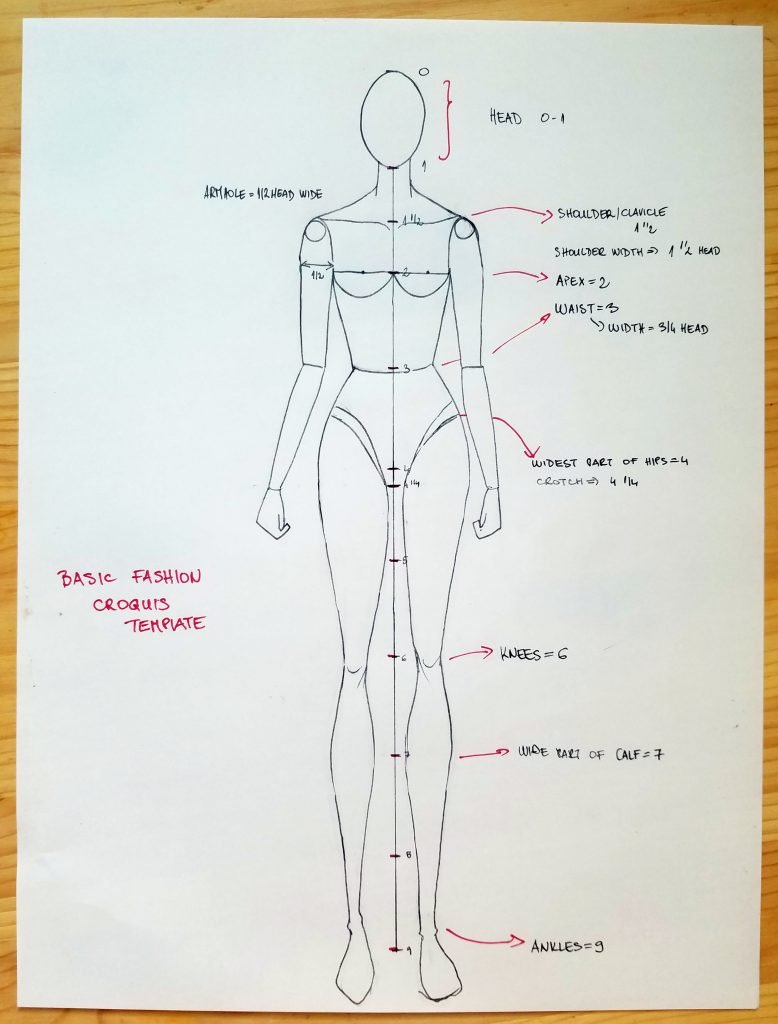
Hand-drawn basic fashion croquis template with annotated body proportions for fashion illustration fashionistasketch
Sketching also strengthens visual problem-solving abilities. When designers work through design challenges on paper, they develop critical thinking skills about garment functionality, aesthetics, and construction that serve them well in all phases of the design process.
The discipline of regular sketching builds speed and confidence in visual communication. Designers who sketch frequently can quickly illustrate ideas during client meetings or collaborative sessions, making them more effective communicators and collaborators.
Stronger Communication Through Visual Expression
Hand sketches serve as powerful communication tools that transcend language barriers and technical jargon. A detailed sketch can convey complex design concepts to manufacturers, clients, and team members more effectively than lengthy written descriptions. This is particularly valuable in today’s global fashion industry, where design teams often work across different countries and cultures.
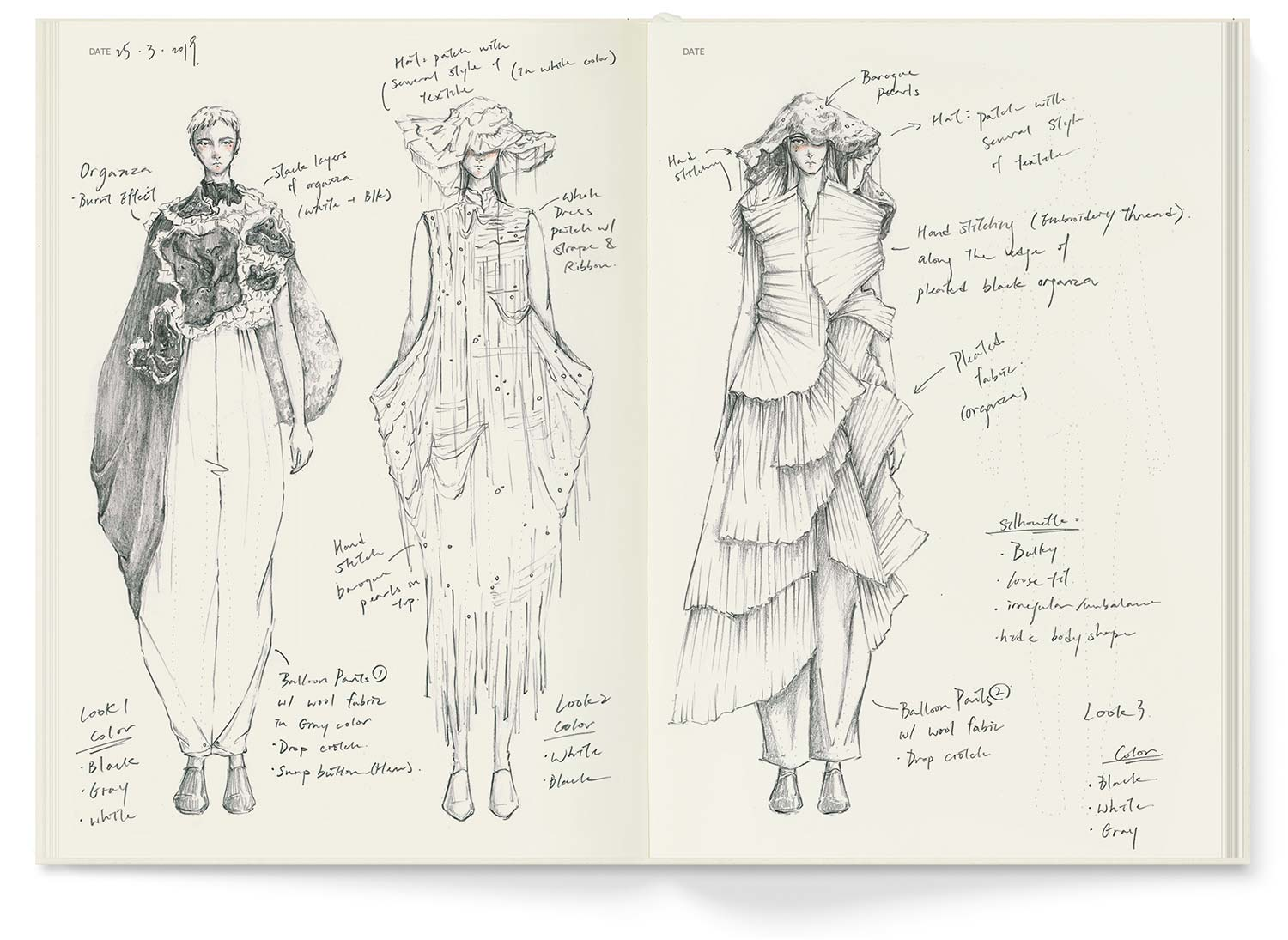
Hand-drawn womenswear fashion sketches with detailed annotations highlighting fabrics, construction, and silhouette concepts fashionary
The emotional quality inherent in hand-drawn work creates stronger connections with viewers. Hand sketches carry the designer’s personal energy and passion in ways that sterile digital renderings often cannot match. This emotional resonance is particularly important when presenting concepts to clients or investors who need to connect with the designer’s vision.
Balancing Tradition with Technology
The most successful contemporary designers understand that hand sketching and digital tools are not competitors but complementary partners in the modern design workflow. Many industry leaders begin with traditional sketches to capture initial concepts, then transition to digital platforms for refinement and presentation.
Karl Lagerfeld, one of fashion’s most prolific designers, famously relied on hand sketching throughout his career, producing thousands of drawings that served as the foundation for his collections across multiple fashion houses. His sketches functioned as both detailed technical drawings and expressive fashion illustrations, demonstrating how hand sketching can serve multiple purposes in the design process.
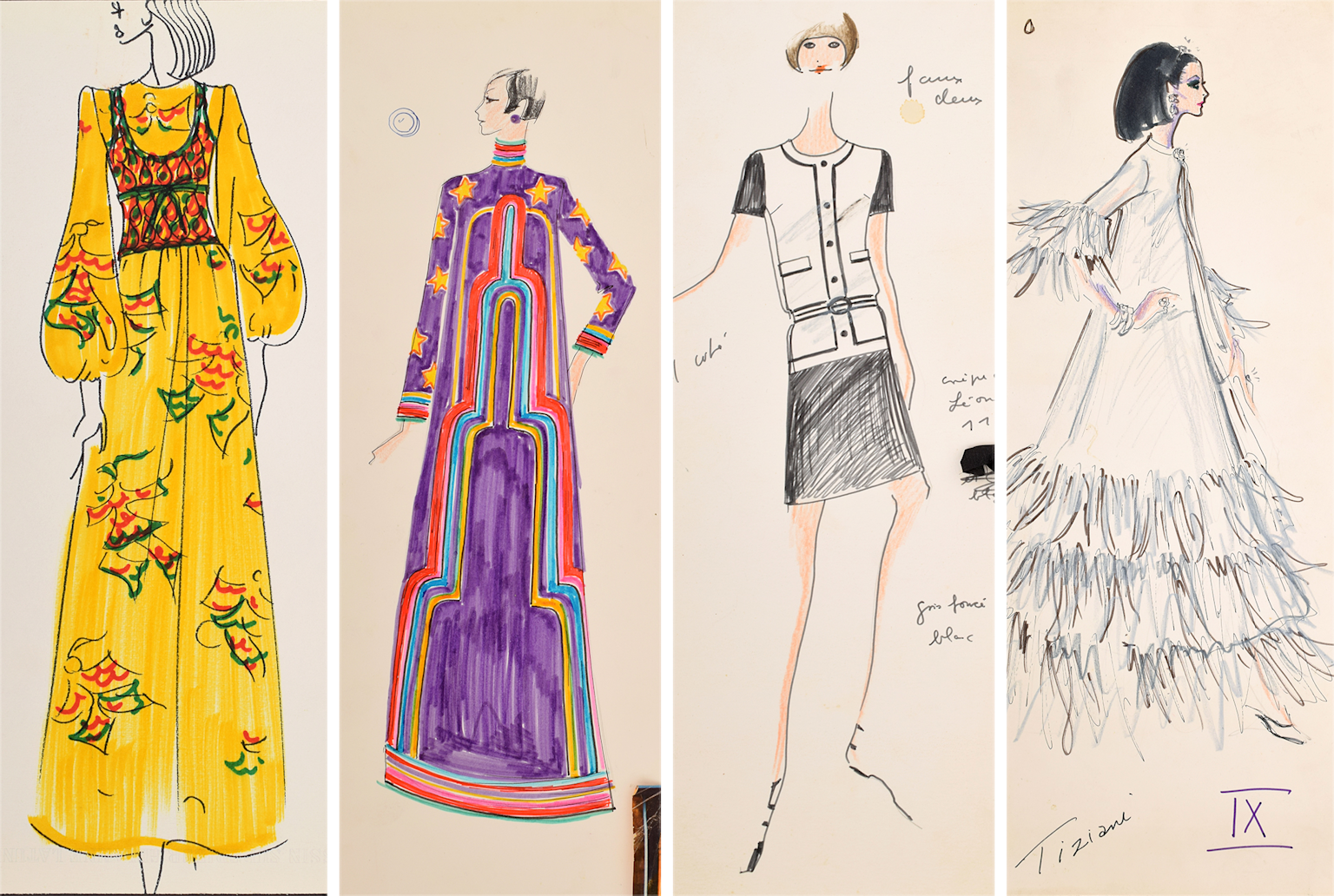
Hand-drawn fashion sketches showcasing diverse designs and artistic spontaneity in Karl Lagerfeld’s illustrations tronicaindia
Similarly, designers like Valentino Garavani developed distinctive sketching styles that became as recognizable as their finished garments. Valentino’s realistic, detailed sketches often resembled finished paintings and were celebrated for their clarity in communicating design intent to production teams.
Learning from Iconic Masters
Fashion history is filled with designers whose sketching abilities were integral to their creative success. Coco Chanel’s simple yet elegant sketches reflected her design philosophy of streamlined sophistication. Her drawings focused on clean lines and functional details, mirroring the revolutionary simplicity she brought to women’s fashion.
Contemporary designers continue this tradition, using sketching as both a creative tool and a means of developing their design identity. The sketching process helps designers understand their aesthetic preferences and develop signature styles that distinguish their work in a crowded marketplace.
Enhancing Digital Workflows
Rather than replacing hand sketching, digital tools can enhance and extend the traditional process. Many designers now use hybrid approaches, beginning with hand sketches that are then scanned and refined digitally. This combination preserves the spontaneity and emotional quality of hand drawing while leveraging the precision and flexibility of digital editing.
Drawing tablets and styluses now offer more natural sketching experiences, bridging the gap between traditional and digital methods. However, these tools are most effective when used by designers who have already mastered fundamental hand sketching skills.
Building Your Sketching Practice
Developing strong sketching skills requires consistent practice and structured approach. Start with basic exercises like drawing simple shapes, practicing croquis (figure templates), and studying proportions. Regular sketching sessions, even just 15-20 minutes daily, can significantly improve both technical ability and creative confidence.
Essential tools for building a sketching practice include various pencil weights (HB to 6B), quality paper, erasers, and fine-line markers for finishing touches. While simple, investing in good materials can make the sketching experience more enjoyable and productive.
The Future of Hand Sketching in Fashion
As fashion technology continues evolving with AI and advanced digital tools, hand sketching’s value becomes even more pronounced. In a world increasingly dominated by algorithm-generated content, the human touch evident in hand-drawn work offers authenticity and emotional connection that audiences crave.
Hand sketching also provides designers with complete creative control and independence from technology limitations. This autonomy becomes increasingly valuable as digital platforms and software evolve, ensuring that designers’ fundamental creative abilities remain intact regardless of technological changes.
Your Creative Journey Starts Here
Whether you’re a fashion student just beginning your journey, an aspiring designer looking to strengthen your portfolio, or a seasoned professional seeking to reconnect with fundamental creative practices, developing your hand sketching skills is an investment in your creative future.
Keep a sketchbook with you always. Fill it with quick gesture drawings, detailed design concepts, fabric swatches, and inspiration notes. Let your sketches be imperfect and experimental—the goal is to maintain a constant dialogue between your imagination and your hand.
Practice sketching different garment types, explore various poses and proportions, and experiment with different drawing tools and techniques. Most importantly, develop your own unique sketching style that reflects your creative voice and design philosophy.
In our digital-first world, the designer who can seamlessly blend traditional sketching skills with modern technology possesses a powerful competitive advantage. Hand sketching isn’t just about preserving tradition—it’s about maintaining the human heart of fashion design in an increasingly automated world.
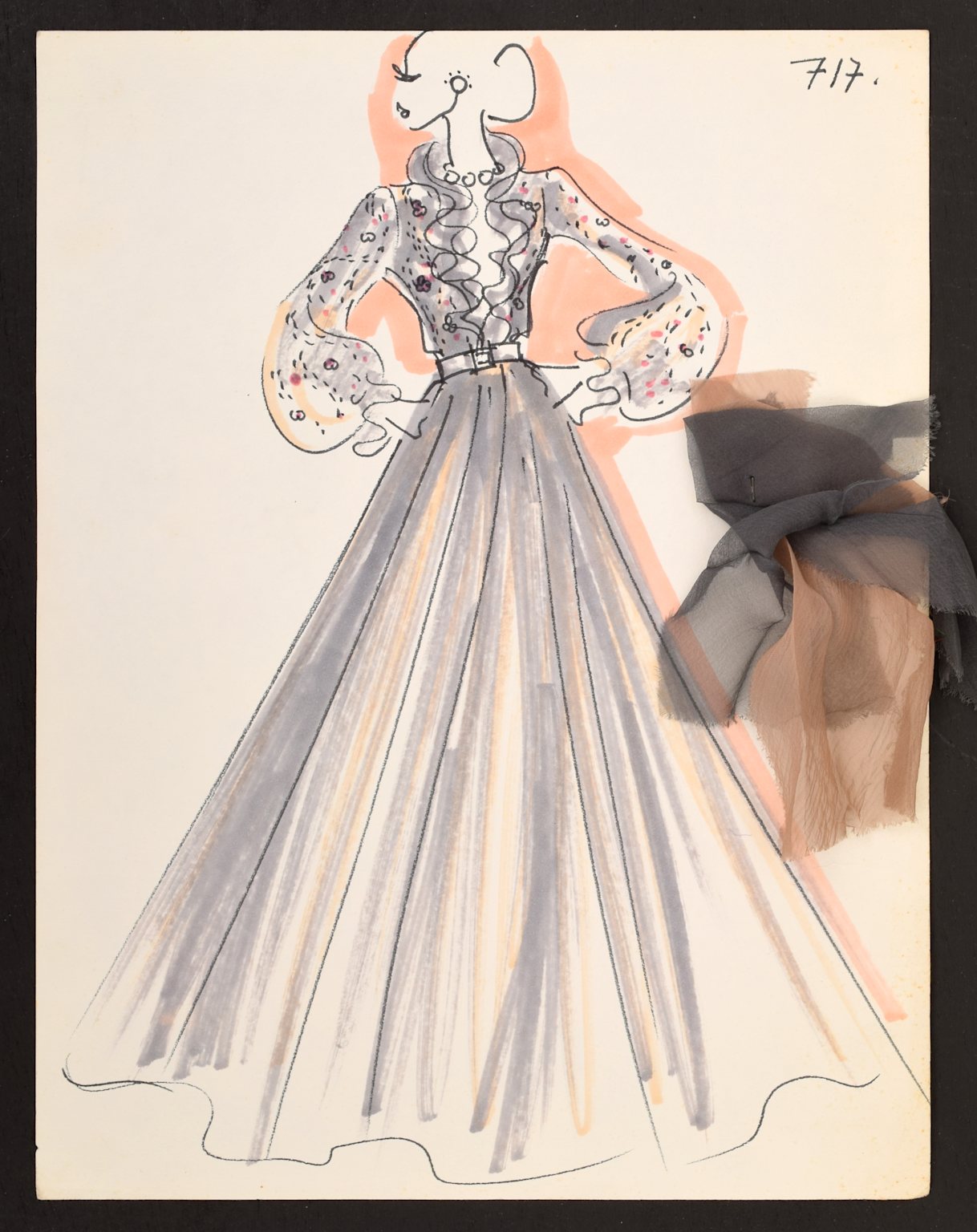
Hand-drawn fashion sketch with fabric swatches showing creative design and tactile planning
The pencil in your hand connects you directly to centuries of fashion design tradition while empowering you to create the fashion innovations of tomorrow. Master this timeless tool, and you’ll discover that the most sophisticated design technology of all is the creative connection between your imagination and your hand.
